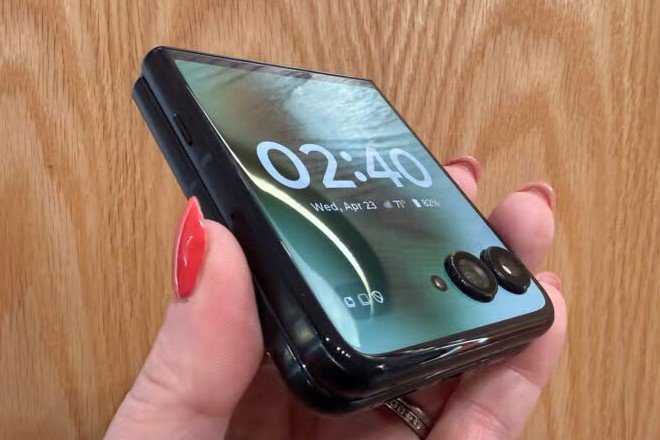Motorola’s Razr Ultra 2025 just did something its predecessors rarely managed—deliver a camera system people might actually brag about. The brand’s once-overlooked photography game is finally worth a second look, especially in a world still obsessed with the likes of Samsung and Google.
There’s a shift happening here, subtle but real. And for once, it’s Motorola grabbing attention not with nostalgia or a bendy screen—but with image quality that holds its own in the modern flip-phone market.
A Flip Phone That Can Finally Shoot Straight
Flip phones aren’t usually known for camera excellence. They’re more about convenience and compactness, right? But the Razr Ultra 2025 is different. This time, Motorola didn’t just tack on sensors—they actually thought it through.
The standout feature? Three 50MP sensors. Yep, that’s not a typo. Motorola’s upped the ante with a triple-threat system that includes a main camera, a revamped ultrawide lens, and a front-facing sensor that’s surprisingly good.
Gone is the 2x telephoto from last year’s Razr Plus 2024. Instead, the Razr Ultra 2025 opts for a much more useful ultrawide shooter. That means broader landscapes, tighter group selfies, and more creative options overall.
One sentence here.
But specs alone don’t tell the whole story. The way Motorola processes these photos has changed too—and that’s where things get interesting.

Colors Done Right—Thanks to Pantone?
If you’ve noticed Motorola’s photos looking more true-to-life, there might be a good reason for that. The company’s ongoing partnership with Pantone seems to be more than just branding fluff.
Photos taken on the Razr Ultra 2025 show improved tone mapping and white balance. Colors pop, but not in a neon, Instagram-filtered way. Skin tones are more natural. Sky blues and sunset oranges look like… well, sky blues and sunset oranges.
This isn’t a fluke. Image processing feels tighter this year, especially in challenging lighting. Shadows carry detail. Highlights are less blown out. And low-light performance? Surprisingly decent for a flip phone.
There’s even a consistency across all lenses—a rare feat in this segment.
• The ultrawide lens no longer feels like a last-minute add-on.
• The main sensor performs well in daylight and indoor shots.
• The front camera is clear and bright, even for video calls.
This kind of visual polish might not beat the Pixel or Galaxy S line, but it finally makes Motorola competitive. And honestly, for fans of compact foldables, that’s more than enough.
Razr Ultra 2025 vs. Razr Plus 2024: A Meaningful Upgrade
Side by side, the Razr Ultra 2025 and Razr Plus 2024 don’t look wildly different at first glance. But there are a few key tweaks that make the newer model stand out.
Take a look at the camera changes:
| Feature | Razr Plus 2024 | Razr Ultra 2025 |
|---|---|---|
| Main Camera | 50MP | 50MP |
| Secondary Lens | 2x Telephoto (12MP) | 50MP Ultrawide |
| Front Camera | 32MP | 50MP |
| Image Processing | Basic tuning | Pantone-assisted tuning |
In short, the Ultra’s new ultrawide lens replaces a less useful zoom lens and adds more real-world versatility. It also bumps up the megapixel count on the selfie shooter, which definitely helps in video calls and social sharing.
One small sentence here.
The upgrade isn’t revolutionary, but it’s deliberate—and that’s a win.
Galaxy Z Flip 6 Still Has the Edge, But Not by Much
Samsung’s upcoming Galaxy Z Flip 6 is still the camera phone to beat in the flip category. Rumored enhancements to its primary sensor and AI-assisted shooting modes may keep it at the top of the pack.
But here’s the thing: Motorola isn’t far behind anymore.
This year’s Razr Ultra narrows the gap more than any previous generation. It’s no longer a clear-cut loss for Motorola. While Samsung will likely keep its edge in nighttime photography and pro-level tools, Motorola claws back with:
-
Warmer, more consistent color tuning
-
Better selfie performance across apps
-
A significantly more useful ultrawide sensor
That’s not nothing.
And while Motorola might not steal Samsung’s crown yet, it’s no longer just a runner-up. It’s a legitimate option for people who want a stylish flip phone without sacrificing too much on camera quality.
Flip Phones and the Photography Ceiling
So, how good can cameras get on flip phones? The truth is, there are physical limits. These devices are thin and have to fold, which means there’s less room for big sensors or long lenses.
Still, companies are getting better at working within those limits.
The Razr Ultra 2025 proves that smart software, better sensors, and strategic partnerships (like with Pantone) can seriously lift image quality—even when hardware constraints are tight.
Flip phones might never be the absolute best shooters, but they’re no longer laughably behind. Motorola is closing the gap with every release, and that’s exciting to see.
One short sentence here.
In a year where folding phones are finally feeling less gimmicky, Motorola’s newest Razr is proof you can look good, feel good, and shoot good too.
